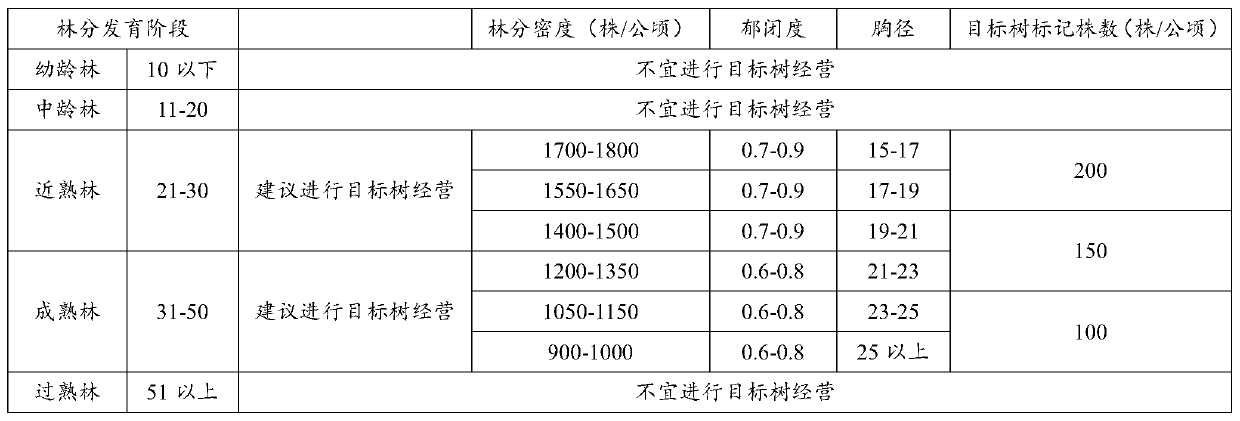Low mountain and hill region pinus massoniana low-efficiency artificial forest near natural forest management method
A technology of masson pine and artificial forests, applied in the field of forest ecological restoration, can solve the problems of understory soil structure erosion, loss of self-recovery ability, and poor water and soil conservation functions, so as to promote sustainable management, sustainable development, and ecological conservation. good benefit effect
- Summary
- Abstract
- Description
- Claims
- Application Information
AI Technical Summary
Problems solved by technology
Method used
Image
Examples
Embodiment 1
[0043] A method for near-natural management of low-efficiency masson pine plantations in low mountain and hilly areas, comprising the following steps:
[0044] S10. Determine the type of forest stand; the first type of forest stand: the forest stand that needs to adjust the growth space of trees and promote the growth of trees; the second type of forest stand: the forest stand that needs to adjust the composition, density or structure;
[0045] S20. Select a tending method according to the type of forest stand; the first type of forest is transformed by target tree management and tending thinning; the second type of forest is transformed by tending thinning or gap felling;
[0046] S30. Select the tending time according to the tending method to carry out tending; target tree management is carried out from young forest canopy to mature forest before harvesting; tending harvesting and forest gap harvesting can be carried out throughout the year.
Embodiment 2
[0048] This embodiment is based on Embodiment 1, in the step S20, tending is performed by tending thinning. In said step S20, the following steps are also included before adopting tending and thinning for tending:
[0049] S201. Determine the thinning intensity; determine the thinning intensity according to site conditions, initial planting density, and forest stand status;
[0050] S202. Selection and labeling of felled trees; the accuracy rate of tree selection and felling is required to reach more than 98%. Labeling should be carried out in the lush season.
Embodiment 3
[0052] In this embodiment, on the basis of Embodiment 1, in the step S20, adopting target tree management to carry out tending includes the following steps:
[0053] S21, determine the target tree density; figure 1 As shown, the target tree density is 100-400 trees / ha. Specifically, if the target tree is a middle-aged stand with good site conditions or a commercial forest, the target tree density can be increased to 200-400 trees / ha; if the target tree is a near-mature stand with poor site conditions or for public welfare For forests, the target tree density can be reduced to 100-200 trees / ha.
[0054] S22. Select a target tree; when selecting a target tree, select according to the principle of selecting the target tree and the criteria of the target tree. Among them, the principles for selecting the target tree are: 1. Avoid the forest road, the edge of the skidding road and the edge of the forest; 2. Relatively even distribution in the small class; 3. See more and compare ...
PUM
 Login to View More
Login to View More Abstract
Description
Claims
Application Information
 Login to View More
Login to View More - R&D
- Intellectual Property
- Life Sciences
- Materials
- Tech Scout
- Unparalleled Data Quality
- Higher Quality Content
- 60% Fewer Hallucinations
Browse by: Latest US Patents, China's latest patents, Technical Efficacy Thesaurus, Application Domain, Technology Topic, Popular Technical Reports.
© 2025 PatSnap. All rights reserved.Legal|Privacy policy|Modern Slavery Act Transparency Statement|Sitemap|About US| Contact US: help@patsnap.com


